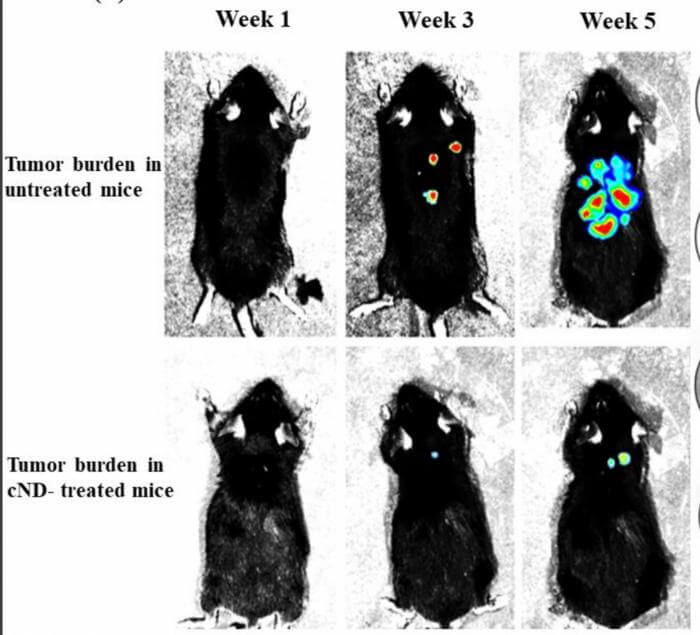NEW DELHI, India — Diamonds may be a girl’s best friend, but they’re also cancer’s worst nightmare. Scientists say “nanodiamonds” have the ability to stop the spread of cancer, making tumors much easier to treat. These tiny diamonds are composed of carbon nanoparticles which are just two to eight nanometers in size.
Scientists in India used these microscopic crystals, which they can combine with various chemicals and drugs, to block cancer cells from migrating to healthy parts of the body. This work followed prior studies which discovered that dividing cells were more likely to absorb nanodiamonds. Moreover, epithelial cells (cells that cover and line the organs and skin) lost their ability to move across cellulose membranes when scientists exposed them to nanodiamonds treated with carboxylic acid.
What does this mean for cancer treatment?
These earlier studies led Rajiv Saxena and a team from South Asian University to test nanodiamonds as weapon against tumor metastasis — the process of cancerous cells moving to new areas of a patient’s body. In their experiments with mice, the team treated B16F10 melanoma cells (a type of skin cancer) with carboxylic nanodiamonds.

Results show the nanodiamonds successfully blocked the cancer cells’ ability to migrate. Meanwhile, untreated tumor cells were able to grow and move to new areas of the mice — leading to further cancer development and more severe disease. Mice receiving the nanodiamond treatment saw little to no spread of their tumors.
“In the experimental metastasis model also, where B16F10 cells were directly injected in the blood, cND (Carboxyl nanodiamond) treatment would take away the ability of these cells in blood circulation to extravasate from the blood vessels and to further move through the ECM (tissue extracellular matrix) to reach the premetastatic niche areas,” the team writes in the journal PNAS Nexus.
Based on these findings, the team believes that these tiny carbon nanoparticles may represent the next step in stopping the spread of cancer in patients worldwide.
You might also be interested in:
- Lasers turn plastic into tiny diamonds in ‘the blink of an eye’
- Breast cancer spreads during the night, study reveals
- Timing chemotherapy treatments depending on the cancer may prevent the disease from spreading

